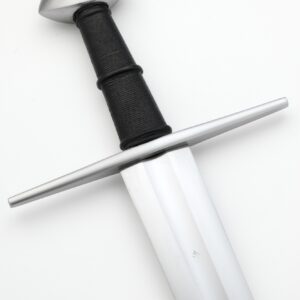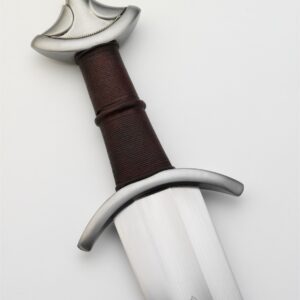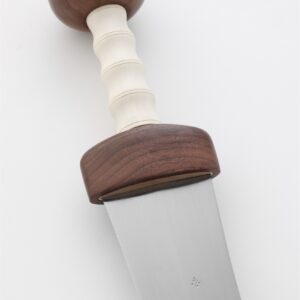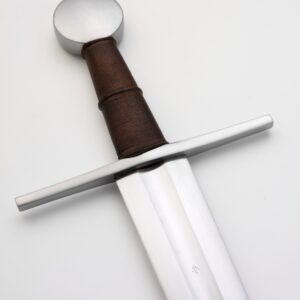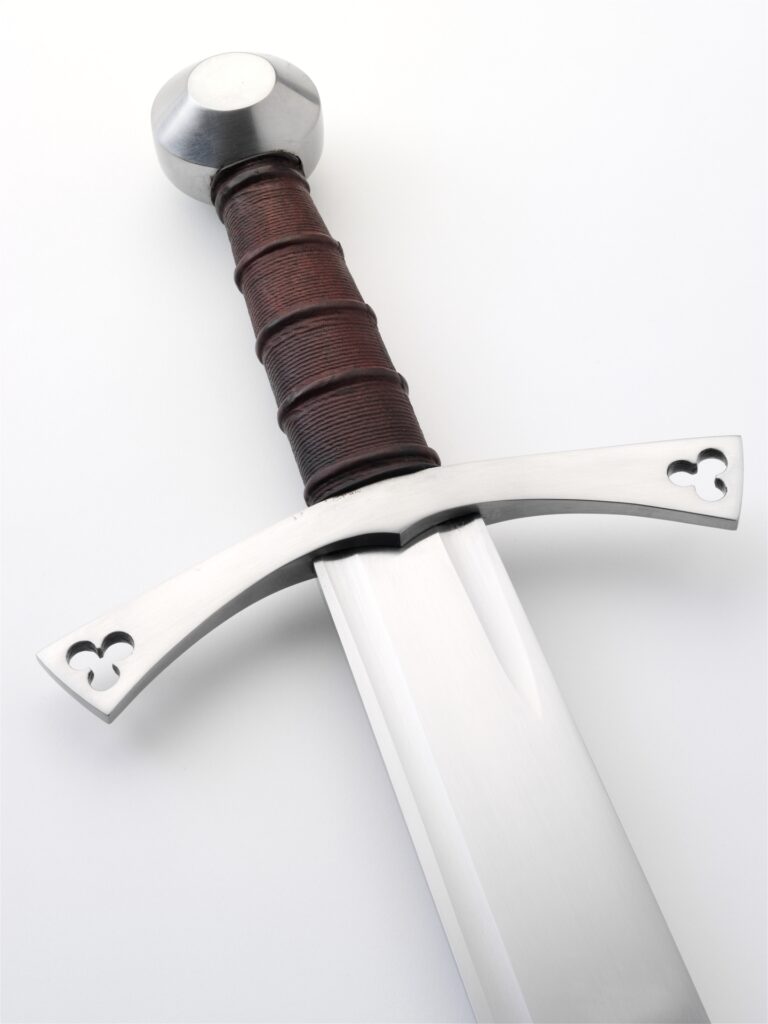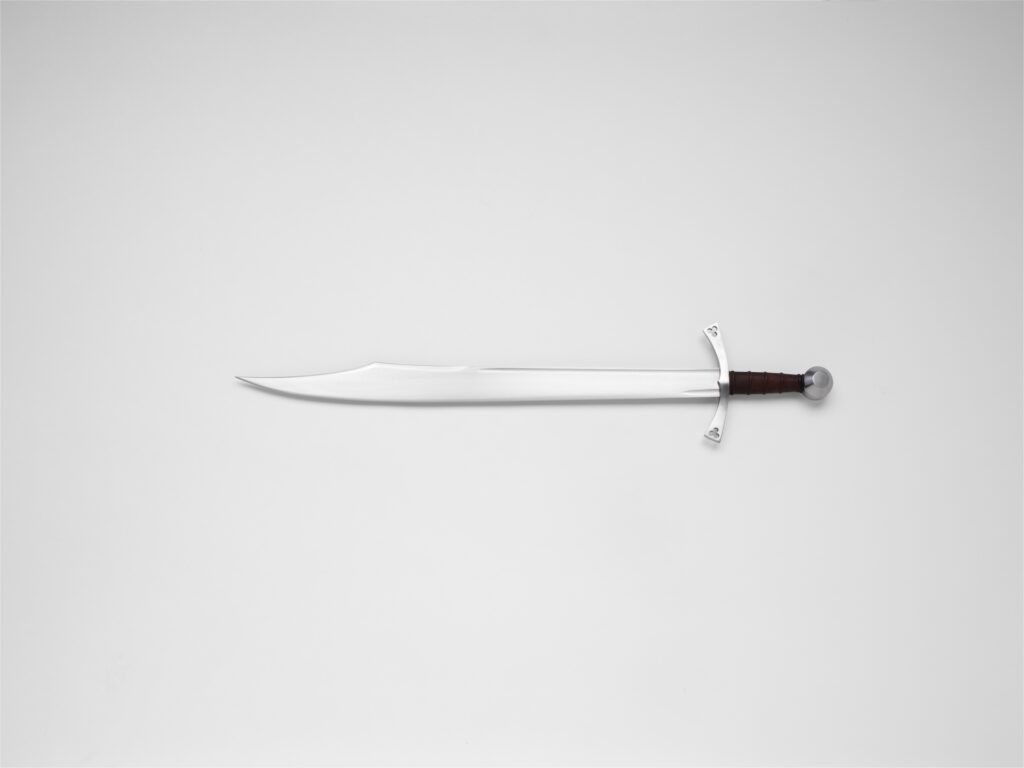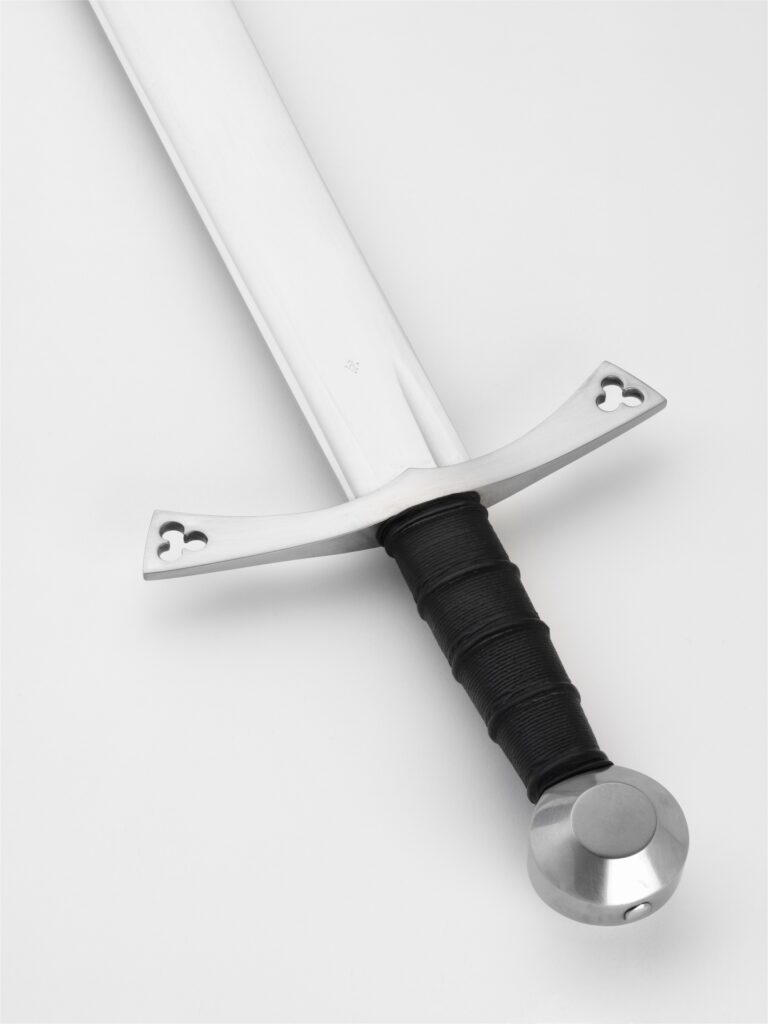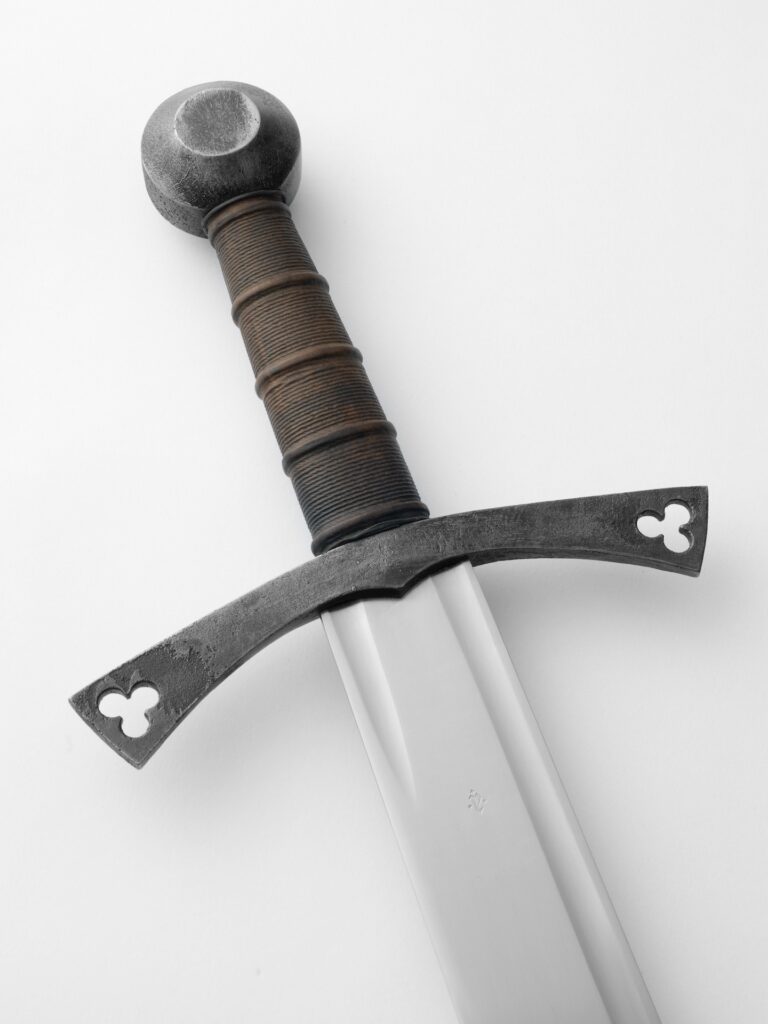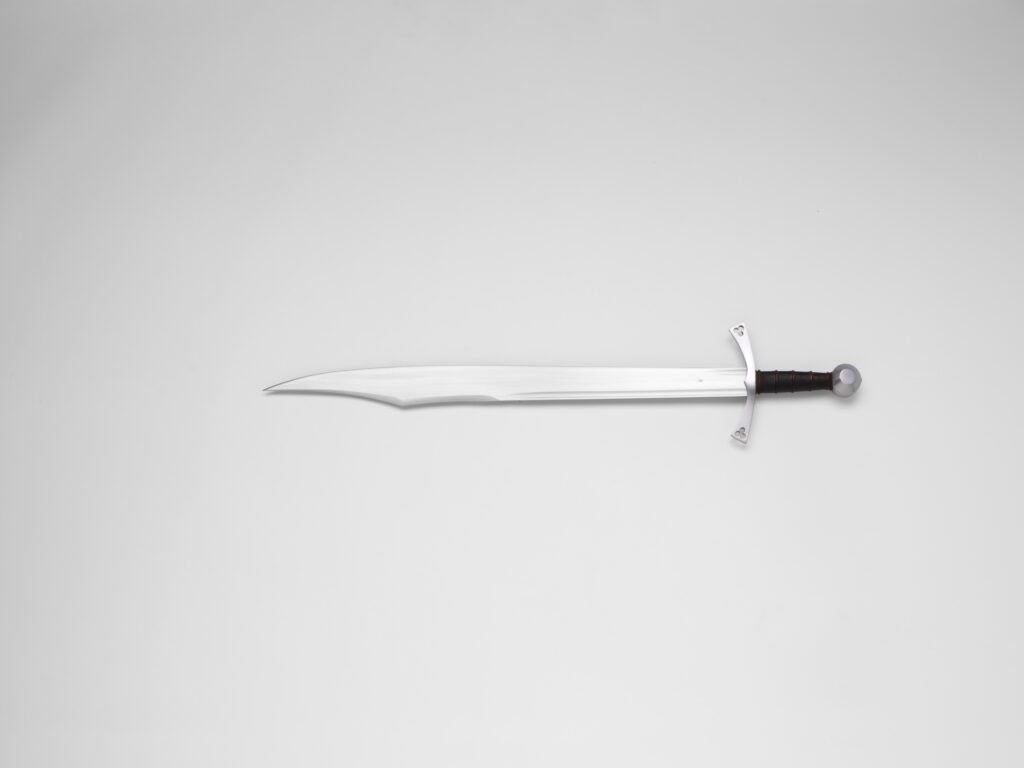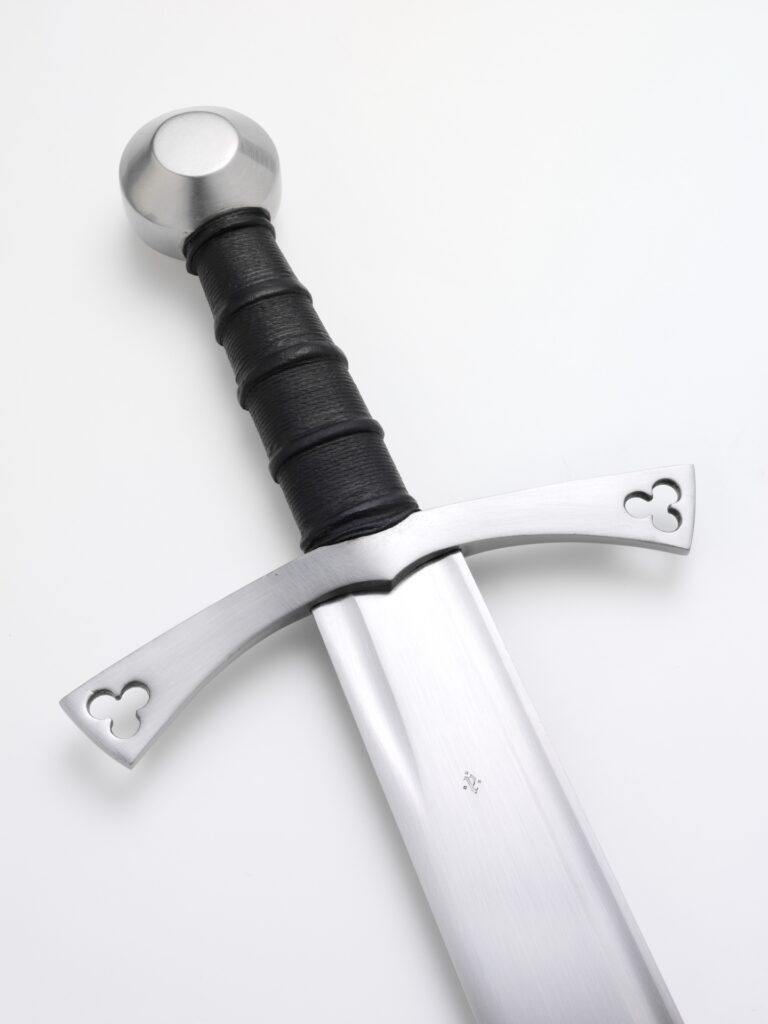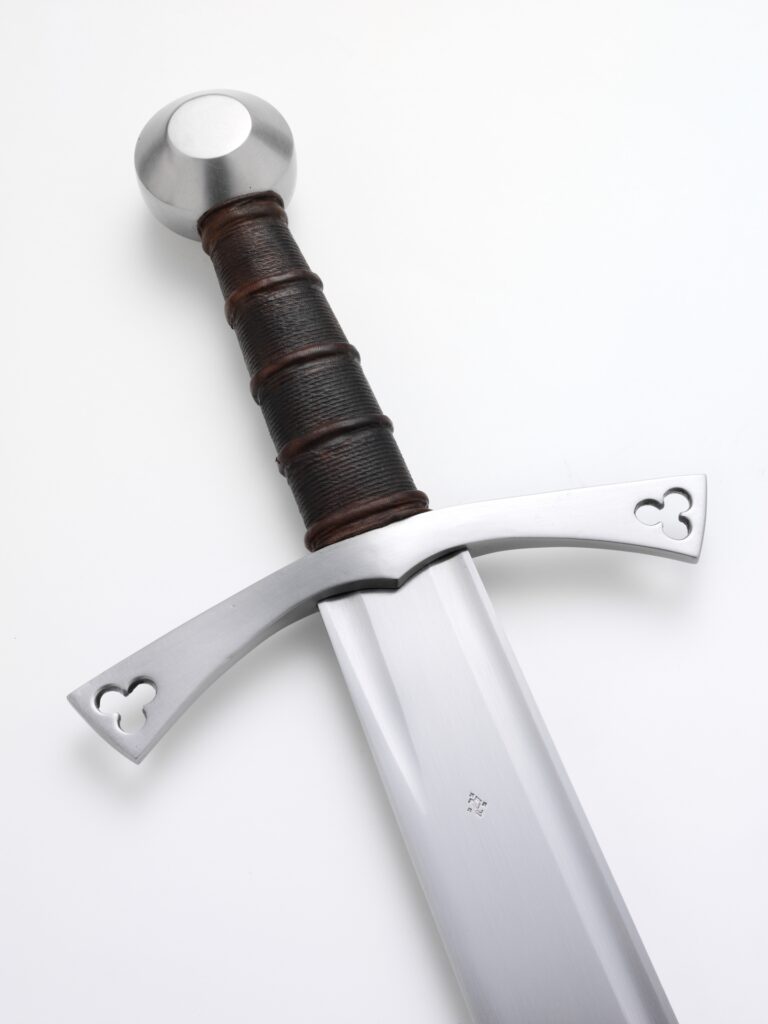(Medieval Falchion)
The Falchion is a weapon known by different names and occurs in various shapes and forms through the ages. We can see illustrations in art as ealry as the mid 13th C. The English ”falchion” is derived from the French ”Fauchon”, spelled as ”fawchon” in late 14th C texts. Behind these names lies the Latin ”Falxs,” describing weapons with scythe-like blades. Falchion blades are typically rather short and broaden towards the point with the edge in a more or less sweeping curve. The hilt usually follows the popular styles as seen on double edged swords of the same period.
Two general shapes are predominant:
1 The first is curved more or less like a sabre usually with a short clip point.
2 The second has a straight back with or without clip point, and a curving edge.
The Falchion seems to have been popular in England, France and Italy, while in Germany it was for some time not regarded as a weapon of military importance. Hence, in German speaking areas there is no mention of Falchions.
The first type of blade were often instead called ”Malchus” (named from the occasion when the apostle Peter cut of the ear of one of the soldiers, by name Malchus,sent to arrest Christ). With a knife type hilt, these blades are recognized as belonging to the Grosse Messer family. The Vassal is inspired from 14th C examples with the second type of blade. The most famous of which is the Thorpe Falchion in the Castle Museum, Norwich.
The Vassal is of moderate length and has a generous clip point, making it suitable for thrusting as well as cutting. The single edged blade allows for a stiff spine, that increases cutting performance. Contrary to popular belief, a Falchion need not be overly heavy or cumbersome. They can have much the same heft and balance as a double edged sword of the same dimensions. Perhaps there is a slightly more pronounced blade presence, but the moderate length of the blade still allows fo quick recovery after a blow.
The section of the blade is a thin triangle and there is a fuller along the straight section of the back. This makes for a very effective use of available material inducing stiffness and effective cutting performance. Towards the point there is a long false edge taking away some of the excess weight while also introducing a change in the relative stiffness in this part of the blade.
At the base of the blade there is a ricasso of sorts. This feature can be seen on single edged weapons as early as the 14th C. It helps keep the base of the blade and junction to the tang robust (a good point with blades of triangular section) and makes ”fingering” of the guard possible. The pommel is a crisply defined wheel pommel of type J and the cross with its flairing ends and decorative piercing is of style 6.
Specifications
Overall length: 33.5″ (85.1 cm)
Blade length: 27.25″ (69.2 cm)
Blade width at guard: 1.66″ (4.2 cm)
Blade width at the false edge: 2.3″ (5.8 cm)
CoG: 3.75″ (9.5 cm)
CoP: 17″ (43.2 cm)
Weight: 2 lbs 8.75 oz (1.15 kilos)
This sword is offered in a limited edition of 100 swords worldwide.
